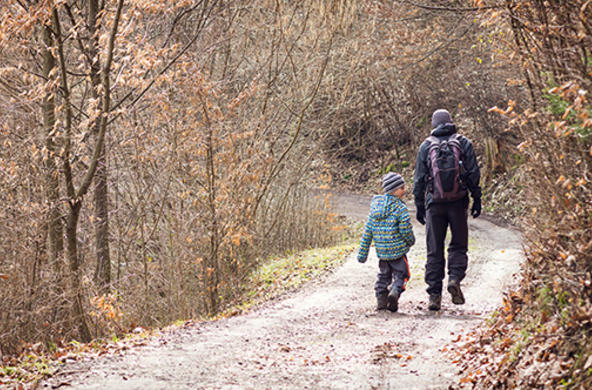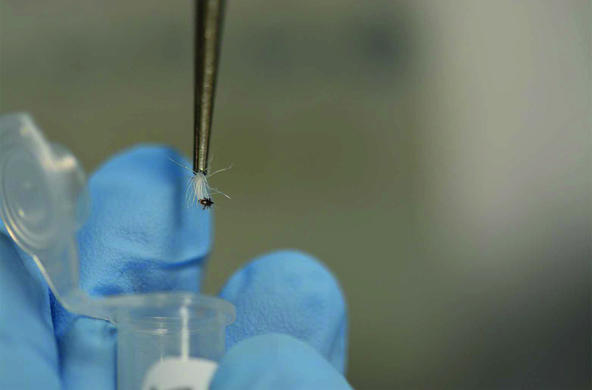Initially, Rick Ostfeld’s work at the Cary Institute focused on how small mammals shape forests. Early on, he noticed a unique relationship among mice, black-legged ticks, and the bacterium that causes Lyme disease. Two decades on, he has earned the title disease ecologist.
When white-footed mice are abundant, Ostfeld's studies have shown there is a rise in both blacklegged ticks carrying the Lyme bacterium and the incidence of human illness. His team has also revealed the disease-amplifying effects of habitat fragmentation and species loss. Both scenarios favor mice.
What is disease ecology?
Disease ecologists explore relationships among infectious diseases, plant, animal, and human hosts, and the environment – with the goal of understanding risk. Many diseases that infect people are spread by wildlife, from West Nile virus to SARS.
Your field surveys have shown, when it comes to minimizing Lyme disease, predators are good neighbors. Any updates?
We’re looking at how fox and coyote influence tick infection rates at 150 field sites in Dutchess County. Some sites have both species, but most favor one. Fox are good at hunting mice. Coyote displace fox and eat fewer mice. Preliminary results suggest Lyme risk is lower when fox are present. We need to assess things for several years to pinpoint firm trends.
We’ve also been monitoring land cover at 180 sites in the county. Past work found fragmented land harbored more Lyme-infected ticks. New work is showing forest cover is linked to lower infection rates. The more trees, the less risky the habitat.
With Department of Health partners, you recently reported on tick-borne encephalitis.
Powassan encephalitis is active in New York, where it is spread by ticks. There is a 10-15% fatality rate in reported cases, with many survivors suffering neurological damage. While rare, Powassan is on the rise in areas that are Lyme disease hotspots. A five-year assessment found this was due to an increase in blacklegged ticks carrying the virus.
Areas east of the Hudson River had the highest number of infected adult ticks, on the order of 4-5% in Westchester, Putnam, and Dutchess counties. Unlike Lyme disease, which takes feeding ticks hours to transmit, this virus can be transmitted just 15 minutes. There is little ‘grace period’ for removing ticks.
Tell me a little about miyamotoi.
Blacklegged ticks in our region are carrying two types of Borrelia bacteria: burgdorferi, which causes Lyme disease, and miyamotoi, which causes a viral-like illness with relapsing fevers. Miyamotoi is less common. But what's concerning is that it can be transmitted from adult female ticks directly to their larval offspring. Larval ticks are half the size of the period at the end of this sentence. It's virtually impossible to detect their bites and we used to think they were disease free.
From a health perspective, is there a silver bullet?
The CDC recently reported that Lyme disease was ten times more common than previously suspected, from 30,000 infections a year to 300,000. I expect there will be a push for much more federal funding, which is badly needed given the size of the public health problem.
Where should we invest?
We need better diagnostics; tick-borne ailments are underreported. But ideally, I’d like to see fewer people getting sick. I think it’s worth exploring a tick vaccine, something that would allow us to have an immune response to tick bites. Also, we need to know where in the environment people encounter ticks so we can get the ticks before they get us.
Are there management options?
We know yard spraying reduces ticks by 60%, but not Lyme incidence in property owners. We’ve never invested in the science needed to do integrated tick management at the community level. There are agricultural models to draw from. To be done right, it would require public and private collaboration.







